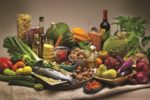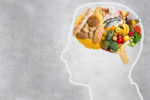Sugar: It May Not Be as Sweet as You Think It Is!

Sugar addiction is a real phenomenon and can wreak havoc on your health.
Cakes! Cookies! Pies! Candy! Ice Cream! What’s not to love? I have no shame reflex in admitting I have somewhat of an active sweet tooth. However, I work hard to keep it under control and strive to combat its activity with copious amounts of daily exercise, but for some people, the cravings for sugar can lead them down a dangerous path. Those sweet treat cravings we all realize from time to time, if left unchecked and allowed to spiral out of control, can lead to sugar addiction. Sure, you may crave something sweet most nights after dinner, but if that sweet tooth can never be satisfied, you may have conditioned yourself to crave sugar, which is not just found in cakes, pies, cookies and candies, but in a variety of processed foods. Not only will sugar adversely affect your teeth, it can expand your waistline and lead to serious health issues, including type 2 diabetes, high blood pressure, stroke and dementia.
Sugar is often a hidden ingredient you may not even realize you are consuming and can also be found in canned soups, salad dressings, cereals, tomato sauce and dried fruit. Americans consume roughly 130 pounds of added sugars each year, which is the equivalent of 22 teaspoons a day, far exceeding the maximum daily recommendation set by the American Heart Association of five teaspoons for women; nine for men and three for children. (To put this in perspective, one slice of whole wheat bread contains up to two teaspoons of added sugar.)
Despite being known for its sweet appeal; sugar can cause serious issues within your body. Fructose, which is a component of table sugar and high-fructose corn syrup, triggers the liver to store fat efficiently, and often in weird places. A diet high in fructose can cause globules of fat build up around the liver, which could lead to nonalcoholic fatty liver disease. How do you avoid this? Reach for fresh fruits instead of juices and smoothies. A piece of fruit has less sugar than a smoothie full of added sugars, and the fiber content of the fruit will help to reduce the sugar shock to your system.
Are you concerned about diabetes? Studies have shown that for every extra 150 calories consumed from sugar per person each day, the incidence of diabetes rises by 1.1%. Let’s not forget about your heart, either. Because diabetes and heart disease are highly intertwined, people with type 2 diabetes are far more likely to suffer from heart issues and/or stroke than their non-diabetic counterparts. Added sugars in the bloodstream create excess insulin, too, taking its toll on your body’s blood vessels and arteries, which can ultimately lead to tense artery walls, putting you at a far greater risk of developing high blood pressure, which could lead to a stroke or a heart attack.
If you are having trouble lowering your cholesterol, sugar could be to blame. According to a study in the Journal of the American Medical Association, “after excluding people with high cholesterol and/or diabetes and people who were highly overweight, those who ate the highest levels of added sugars experienced the biggest spike in bad cholesterol levels and dangerous triglyceride blood fats, and the lowest good (HDL) cholesterol levels.”
Sugar can also turn you into an addict. Similar to street drugs, sugar affects the pleasure centers of the brain, and as one develops a tolerance for sugar, more sugar is needed to obtain that feel-good “fix.” Further, the more sugar you consume, the hungrier you will feel, as eating too much sugar deprives your brain of the ability to tell your body you are full. The result? Excess pounds and eventually obesity.
There is hope, however, for even the most stubborn of sugar addicts. If you are craving sugar, consider taking baby steps by combining foods. For example, opt for a banana but dip a bite or two into some chocolate sauce. When the sugar craving hits, reach for a piece of fruit. Not only will you get beneficial fiber and nutrients, you will get a bit of sweetness to satisfy your sugar craving. Stock up on nuts and seeds and have them handy when the usual desire to reach for a cookie or some ice cream strikes. Chewing gum is also a great way to avoid giving in to that sugar craving.
Finally, don’t just sit there, as the longer you sit around craving sugar, the more likely the craving will intensify and the more likely you will cave under the pressure. Go for a walk around the block or move around to some music to take your mind off the craving. Be sure to also eat regular meals instead of waiting too long between meals or skipping them altogether, which can set you up to fall back on your sugar habit. Instead, opt for a light meal every three to five hours to keep your blood sugar stable, and gravitate towards protein, fiber-rich foods, such as whole grains and produce.






